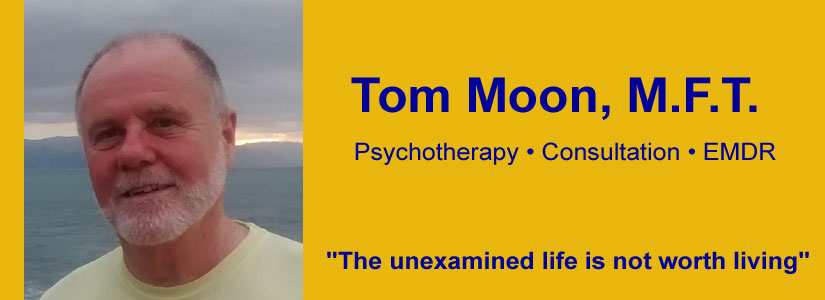In my work with (mostly gay male) couples I’ve often notice that the “substantive issue” turns out to be how the couple communicates about the substantive issues. It’s not uncommon for even the most loving of couples to resort to harsh, hostile, and aggressive language when conflict arises.
That is one of the reasons why I’m so interested in the work of clinical psychologist. Marshall Rosenberg, who developed a communication process called Nonviolent Communication (NVC). Raised in the mean streets of Detroit, he grew up surrounded by anti-Semitism, racism, and violence, and early in life made a commitment to find a better way. He writes: “Believing that it is in our nature to enjoy giving and receiving in a compassionate manner, I have been preoccupied most of my life with two questions. What happens to disconnect us from our compassionate nature, leading us to behave violently and exploitatively? And conversely, what allows some people to stay connected to their compassionate nature even under the most trying circumstances?”
He believes he has found some answers to both questions. One answer he offers to the first question is that we have all been socialized into styles of life-alienating communication, such as making moralistic judgments of others. It’s important here to distinguish between value judgments and moralistic judgments. We all make value judgments about the qualities we desire in life – we may value honesty, freedom, or kindness, for instance. But when we make moralistic judgments, our attention is focused on classifying, analyzing, and determining the levels of wrongness in others. Our attention is diverted from what we and others need and focuses instead on blaming and attacking. When we do this we communicate in an impersonal and defensive way that doesn’t really reveal what’s going on inside of ourselves. So, for example, if my partner wants more affection than I’m giving him, he’s “needy and dependent.” But if I want more affection than he’s giving me, then he’s “aloof and insensitive.” When I communicate in this way, any potentially productive discussion of how we might have a more mutually fulfilling relationship gets lost in the distraction of dueling judgments. Rosenberg cites evidence which suggests that there is considerably less violence in cultures where people think in terms of human needs than in cultures where people label one another as “good” and “bad” and believe that the “bad” ones deserve to be punished.
NVC focuses on three values: self-empathy, honest self-expression, and empathy for others. It offers a four-step model for self-expression which brings the discussion out of the realm of judgments and re-focuses it on communicating needs and feelings. This model is very simple to understand, but requires sustained commitment to learn to practice. The four steps are:
- 1. To make observations uncontaminated by judgment, analysis, or blame, of the concrete actions that are affecting our well-being.
- 2. Describe how we feel in response to what we are observing.
- 3. Identify the needs, connected to these feelings, and to evaluate which needs aren’t being (yet) met instead of evaluating actions as “right” or “wrong.”
- 4. Express requests clearly, in positive language, as to how the other person could enrich one’s life. Essential in nonviolent communication is that the other person is to be left free to honor or deny the request.
To give a concrete example of this process in action, compare these two statements: 1. “You’re a homophobic asshole.” 2. “When you refer to me by that name I feel sad and unsafe. I know that we both believe that we all deserve to live in safety and to feel respected. Would you be willing to discuss your differences with me without using that word?” Which statement is more likely to perpetuate, and which to help bridge, division?
The most common criticism of this form of communication is that it’s hopelessly unrealistic and unsuited for the harsh world in which we all actually live. Many people, when they are first exposed to it, fear that practicing it would leave them vulnerable and exposed to attack. In fact, however, the process has been tested and found practical in some of the most violent environments on the planet. Through his Center for Nonviolent Communication (CNVC), Rosenberg has initiated peace programs in Rwanda, Burundi, Nigeria, Malaysia, Indonesia, Sri Lanka, the Middle East, Serbia, Croatia, and Ireland. NVC has also been found to be effective in prisons, schools, and corporations, as well as in couple counseling. The CNVC has grown into an international nonprofit organization which provides training in 30 countries. For those who would like to learn more about NVC, Rosenberg’s book, Nonviolent Communication: a Language of Life, is an excellent introduction.
We humans are all probably to some extent hard-wired, when in conflict, to revert to tribalism – to divide the world between the good “us” and the evil, alien “other.” But NVC shows that we also have some choice in the matter; that it’s possible for us to practice another way of dealing with conflict, in which the delusional division between “us” and “them” dissolves in the understanding that we’re all “us.”
Next time: Nonviolent Communication and Anger
